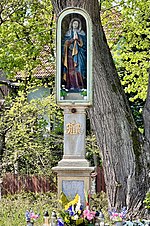Institute of Nuclear Physics of the Polish Academy of Sciences

The (Henryka Niewodniczański) Institute of Nuclear Physics Polish Academy of Sciences is a research center in the field of nuclear physics of the Polish Academy of Sciences, located in Cracow. It was founded in 1955 by Henryk Niewodniczański. In 1988 the institute was named after Niewodniczański. The co-founder of the Institute was Marian Mięsowicz. The institute conducts research in four main areas: Astrophysics and particle physics, Nuclear physics and strong interactions, Condensed matter (including nano-materials), Interdisciplinary and applied research, which involves applications of physics in medicine, biology, dosimetry, environmental protection, nuclear geophysics, radiochemistry, high-temperature plasma diagnostics, the study of complex systems, such as the human brain, econophysics or linguistics.
Excerpt from the Wikipedia article Institute of Nuclear Physics of the Polish Academy of Sciences (License: CC BY-SA 3.0, Authors, Images).Institute of Nuclear Physics of the Polish Academy of Sciences
Walerego Eljasza-Radzikowskiego, Krakow Bronowice (Bronowice)
Geographical coordinates (GPS) Address Nearby Places Show on map
Geographical coordinates (GPS)
| Latitude | Longitude |
|---|---|
| N 50.089222222222 ° | E 19.890277777778 ° |
Address
Instytut Fizyki Jądrowej im. Henryka Niewodniczańskiego PAN
Walerego Eljasza-Radzikowskiego
31-342 Krakow, Bronowice (Bronowice)
Lesser Poland Voivodeship, Poland
Open on Google Maps











